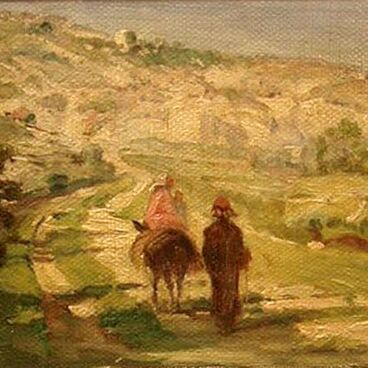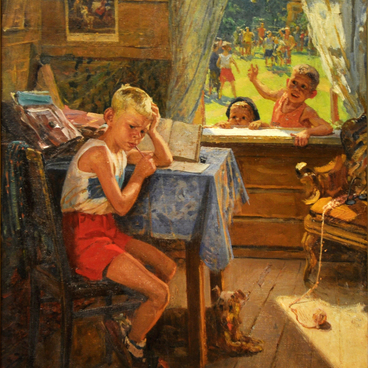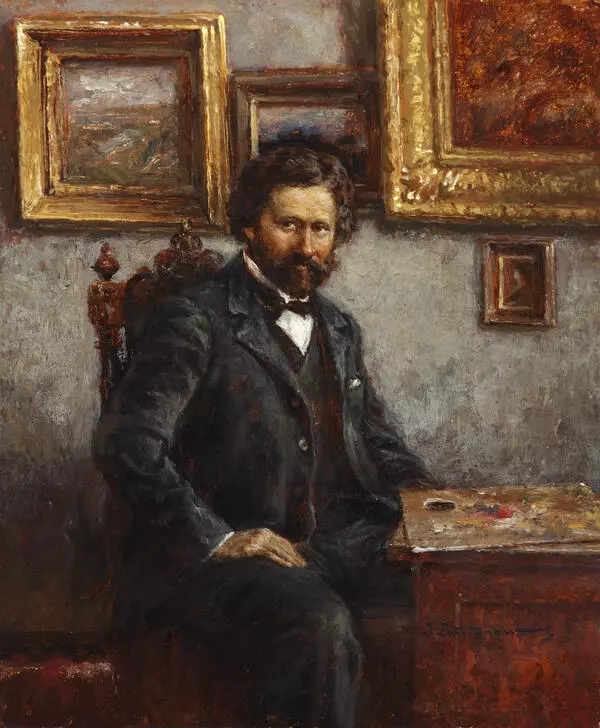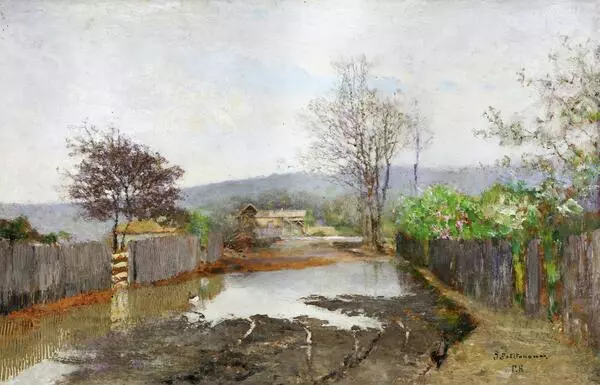Ivan Pavlovich Pokhitonov was born on February 8, 1850 in the village of Matrenovka, Kherson province, on the estate of his father Pavel Danilovich Pokhitonov, a military man from the nobility. Since childhood, Ivan Pokhitonov was fond of drawing, painted in oil and watercolor. He studied on his own, copying his favorite subjects from engravings, painting from life the Kherson steppes, his relatives and acquaintances.
Ivan Pavlovich did not think of becoming an artist. Everything changed when he visited the traveling art exhibitions in Elisavetgrad and Odessa. There he got acquainted with the works of Ivan Ivanovich Shishkin, Arkhip Ivanovich Kuindzhi, Alexey Kondratievich Savrasov, Nikolai Nikolaevich Ge, Ivan Nikolaevich Kramskoy and Vladimir Egorovich Makovsky.
In 1877, Ivan Pavlovich decided to study in Paris. He did not receive a special art education and owed his success to his talent, his own perseverance and efficiency. In France, the masters of the Barbizon school, whose art was based on outdoor work, had a huge influence on the formation of his work. During this period, Pokhitonov’s painting style developed. The artist created his paintings on small plates of lemon tree or mahogany with thin brushes, sometimes microscopic in size. He used fish bones and scalpels, and even magnifying glasses.
In the early 1880s, Ivan Pavlovich Pokhitonov’s landscape miniatures brought him fame first in Europe and then in the Russian Empire. In 1904, he was awarded the title of a full member of the Academy of Arts in St. Petersburg, and in 1905 he became a member of the Society for Traveling Art Exhibitions.
The masters of the 19th century called Ivan Pokhitonov a “wizard” and a “magician” for his virtuoso painting technique. Ilya Efimovich Repin said that the works of his fellow wanderer are “little pearls.” Pokhitonov’s work delighted Leo Nikolaevich Tolstoy, at whose estate the artist stayed and even painted a series of portraits of the Russian writer.
Ivan Pavlovich lived in
France and Belgium for a long time. He died in Brussels in 1923. “Landscape
with Cows” was purchased by the State Procurement Commission of the Ministry of
Culture of the USSR in a Moscow thrift store. In 1961, this work ended up in
the Gorlovka Art Museum.



